#alberto villa photography
Text
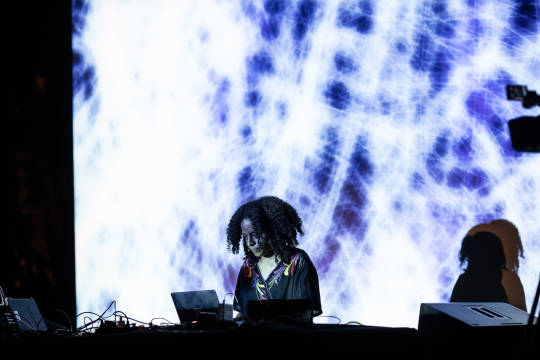
Jessica Ekomane
© Villa Massimo, 2020
source: facebook
📸: Alberto Novelli
#photography#artist photograpy#Jessica Ekomane#France#Villa Massimo#women in electronic music#photo by Alberto Novelli
13 notes
·
View notes
Video
'L'INSECTE'. THE PELLICER 2020 Campaign from PELLICER on Vimeo.
'L'INSECTE'. THE PELLICER 2020 CAMPAIGN.
Creative Director – Gio Pellicer
Fashion Film – Féminin Films
Director of Photography – Sofía Maya
Film Director and Producer – Amanda Fernández
Scouting and Set Design – Alberto Molina
MUA and Hair – Karla Gabaldón
MUA and Hair Assistant – Claudia De Los Santos
DOP Assistant – Blanca Aranda
Graphic Designer – África Pombo
Producer Assistant – Alejandro Fuertes
Sound Design – Adrià Sempere
Styling – Guillem Chanzá
STARRING
BLOW Models – Hugo Del Pozo
TREND Models – Gonzalo Navarro
CIAO Models – Borja Ramo, Carlos Sarrià
5.0 Management – Luiggi Wahnon
MONROE Models – Adrián Villa, Alejandro Sequi, Edward Aponza
Hao
Jesse Andrew
Moustapha Diop
Ángel Cheng
Daniel Davis
Diego Amador
SPECIAL THANKS
Pasarela
1 note
·
View note
Photo

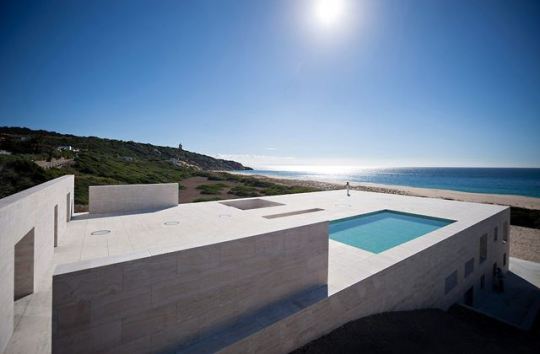
Alberto Campo Baeza / House of The Infite, Cádiz, Spain; images © Javier Callejas
#architecture#architect#Alberto Campo Baeza#design#designer#beach#landscape#minimal#villa#house#housing#residential#cadiz#material#construction#theclassyissue#dezeen#archdaily#ignant#photography#form#architectural form
99 notes
·
View notes
Photo
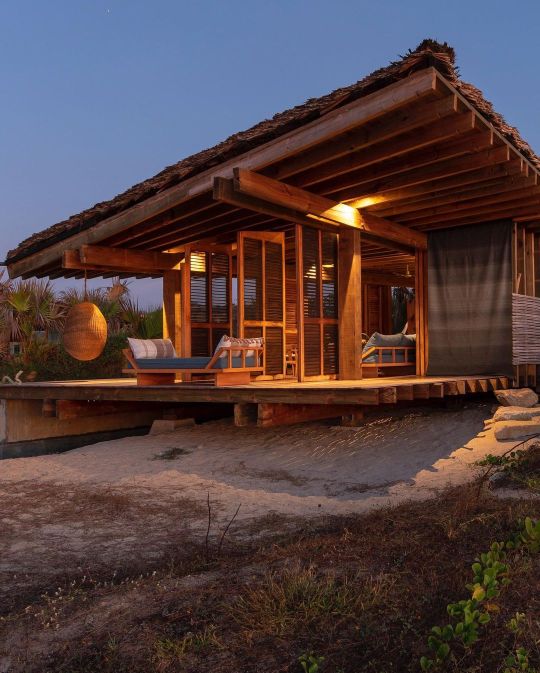
Punta Pajaros in Oaxaca, #Mexico by Alberto Kalach / TAX. Punta Pajaros is a regenerative project developed close tu Puerto Escondido Oaxaca in the Mexican Pacific coast. The project was designed by @kalach_tax Alberto Kalach (TAX) and it is integrated by 11 ecological villas in a land of 25 000 m² with 250 meters of beach front. Read more: Link in bio! Photography: @memofoto Guillermo Montesinos #villa #oaxaca #архитектура www.amazingarchitecture.com ✔ A collection of the best contemporary architecture to inspire you. #design #architecture #amazingarchitecture #architect #arquitectura #luxury #realestate #life #cute #architettura #interiordesign #photooftheday #love #travel #construction #furniture #instagood #fashion #beautiful #archilovers #home #house #amazing #picoftheday #architecturephotography #معماری (Puerto Escondido, Oaxaca) https://www.instagram.com/p/CHRFvBSFB__/?igshid=19apzhqe7k5a8
#mexico#villa#oaxaca#архитектура#design#architecture#amazingarchitecture#architect#arquitectura#luxury#realestate#life#cute#architettura#interiordesign#photooftheday#love#travel#construction#furniture#instagood#fashion#beautiful#archilovers#home#house#amazing#picoftheday#architecturephotography#معماری
31 notes
·
View notes
Text
Reviews 325: Alberto Garralón
Back in 2018, Discómanos Records debuted with a stunning compilation entitled La llama de Prometeo: La puerta de entrada a las Nuevas Músicas Españolas, which did for Spain’s "new music” scene what Alixkun’s Kumo No Muko compilations did for Japanese synth-pop and ambient…that is to say, La llama de Prometeo, while touching on the works of familiar artists such as Suso Saiz, Iury Lech, Pedro Estevan, María Villa, Finis Africæ, Eliseo Parra, and Pablo Guerrero, did so in a more intimate manner, presenting unheard and obscure compositions reflecting curators Lord Guardado’s and Daniel Nielles’ personalized journeys through this beautiful sonic universe. But the compilation went even further by shining a much deserved light on lesser known figures from the Spanish ambient underground…artists like Juan Veron Gormaz, Pedro León, Antonio García, and Alberto Garralón…all of whom delivered immersive sonic paradises that sit perfectly aside the most cherished works from Grabaciones Accidentales and Hyades Arts.
So it’s fitting that Discómanos’ second release continues on this track, focusing specifically on the music of Alberto Garralón. Though there’s scant information available concerning the life and career of Garralón, I can at least say that Baila, Claridad! was recorded during 1989 and 1990 by way of a Tascam Portastudio and was released not long after via a limited cassette pressing. The album sees the visionary guitar player using an array of synthesizers, woodwinds, idiophones, and hand drums to explore delicate audial dreamscapes that mesmerically blend elements of Spanish traditional music and classical composition together with psychedelic folk, starry-eyed new age, pastoral prog, meditative minimalism, and exploratory kosmische. And for their reissue, Discómanos have invited in Fernando Arias of Audiorec Sound Design, who has lovingly remastered the music from the original source, allowing it to shimmer and shine anew alongside a striking visual layout featuring the high contrast photography of Koldo Serra.
Alberto Garralón - Baila, Claridad! (Discómanos, 2019)
Opening track “Cuidad Mercurio” is split into three parts, the first of which is “Cuidad abierta,” where fingerpicked acoustics are layered through clouds of reverberation, radiant keyboard melodies hover like coastal mist, and blinding leads smear into sunbeam psychedelia. Then in second part “La media luna,” the fingerpicked acoustics lock into patterns of ritualistic minimalism that generate silvery flashes of luminescence…perhaps meant to evoke the light of the titular half moon as it reflects off a gentle ocean surface. And as the track progresses, a reed instrument blows through the background, adding further touches of mysterious seaside magic. “Cuidad Mercurio” ends with a final part entitled “Es to reflejo,” which sees jangling chordscapes flowing all around the spectrum. Synthesizers transmute into feedback as they soar through sky, mixing with the dreampop guitar atmospherics in a way pulling my mind to the more blissed out moments from Ishinohana. Imagine post-punk guitar riffing blurred into a daydream hallucination, or a space pop guitar instrumental scoring some impossible sunset. Pianos, marimbas, kalimbas, and other solar idiophones dance beneath starlight bell tapestries in “Iria Feliz,” while hand drums hold down a rainforest groove. Wavering guitar solos alternate with ghostly leads that squiggle through a sunrise sky and there are gamelan evocations in the way the interlocking loops of exotic metal generate hallucinogenic polyrhythms, with everything being wrapped around by aquatic organ wavefronts. And when the rhythms pull away, we find ourselves in a swooning section of “Heart and Soul” romance, where FM fluids cycle around sprightly guitar patterns and organ drones flow beneath noir-pop atmospheres recalling the work of Badalamenti, especially on Twin Peaks.
Droning bass synthesizers open “Julia” while aqueous organs generate underwater currents that radiate outward in every direction. Twinkling FM bells flutter through echo machines, synthetic woodwinds mimic the songs of whales, glowing feathers lilt down on unseen air currents, and shadowy clouds of gas billow out from deep sea vents while melancholic pad melodies wrap around the heart…sounding almost theremin-esque and evoking classical music, only as approximated by oceanic spirits and instruments of choral, seashell, and crystal. “Bye, Bye Babilonia” follows and shrouds guitar arpeggiations in layers of slapback while glass-toned chords spread out across the stereo spectrum. Another guitar is manipulated via cosmic synthesis, with epic melodies flowing towards some blood red horizon even as they mutate and modulate into cosmic liquid. The vibe is majestic and melancholic…like a spaghetti western adventure across a land of darkness, wherein unseen temple bells toll far in the distance. And as new age chimes sparkle like starlight amidst the shadowy melodic environments, clouds of subsonic smoke work into the mix and wrap gently around the body. The poetically titled “Esto es amor… (Esto es el mar)” begins as a buzzing keyboard fantasia, with a harpsichord beaming in from some unknowable dimension joined by malfunctioning machine approximations of a piano. Each and every note trails thick clouds of black smoke, which then overlap to create pulsing wavefronts of resonance. There are tones of wistful nostalgia lurking behind the synthetic keyboard smolder…as if Garralón is yearning for some dreamworld that never was…and as the track progresses, my mind wanders to the alien keyboard interludes and manipulated piano lullabies of Mogwai’s Young Team.

The B-side opens with “Baila, Claridad!” and its mallet instruments dancing while bass pulses climb joyously towards the clouds. A soft pitter-patter rhythm flows underneath, almost martial in nature, and the whole thing evokes a pastoral lullaby, especially as acoustic guitar arpeggios fall like a rain of photons. Steel strings vibrate across the mix, synthesized gas clouds glow like the morning sun, virtual marimbas splash through tide pools, epic guitar themes seek out the horizon, and at some point, a joyous voice sings deep within the background ether. Later, as palm-muted guitar melodics begin supporting the energetic layers of pastoral folk riffing, a sitar-esque buzz dances through mix, adding subdued hues of Indian classical music. “Adios a los sintetizadores” sequences vibraphones and marimbas into drunken patterns that are soon overlaid by heart-melting bass descents and ghostly pad hazes. Then as we bid farewell to the synthesizers, the mix gives over to virtual idiophonics and zany electro drum processionals, with pounding tom rhythms flowing in and out of phase while guitars jangle in the distance. Then in “Rew,” organ drones flow out from a spiritual oasis and electronic feedback manipulations quiver as if orgasming before zipping backwards in time…the whole thing evoking an LSD-laced church hymn accented by wobbling brass. The mallet instruments return for “A mis amigos” and execute starscape rituals while synthesized woodwinds move between lullaby hypnosis and kosmische psychosis. There’s a touch of mystical desert folk music to the proceedings, with FM synths and electric organs attempting to recreate the magic atmospheres of Spanish traditional music. And as flutes and panpipes sing towards a cinematic sunset, the track evolves into a spaceage psych folk serenade.
Woozy sequences generate intergalactic bubble formations in “Madrid…Formentera” and acoustic chime tapestries surround Berlin school synth patterns while elven bell tones fall like starlight. Blurry reed melodies diffuse into the mix…perhaps a harmonica blown in desperation…with long breathy decays trailing into the mysterious night. All distinction between chiming guitars and sparkling synthesis disappears as the sounds merge towards ceremonial folk spirituality…all while simplistic chord changes push the heart towards worlds of fantasy and romance. “El sueño de Clara” see organ generated basslines smoldering beneath sprinkled guitar starlight, with everything washed out…like a lo-fi dreamscape heard through layers of analog obscuration. Further guitar accents move in, generating melodic ripples across the surface of some picturesque pond while buzzing themes of pastoral majesty bring visages of butterflies and flower fields of ever possible color. A spectacular conversations between reeds and synths pans across the stereo field, generating kaleidoscopic displays of minimal new age maximalism that evoke for me impressionistic renderings of paradise beachfronts…blurry and out of focus, yet breathtaking all the same. The album closes with “Doce cuidades blancas” and its mysterious church bells tolling through gaseous cloudforms and glowing bodies of light. Basslines move like smoke, synthesized French horns play dawn salutations, and amorphous chord formations transmute into digitized space foam…their tones almost metallic and incandescing in strange colorations. And later, as orchestral brass descents move over the mix, they lead to intriguing moments of contrast, wherein extra-terrestrial electro-vapors clash against more earthly emanations of synthesized classical music.
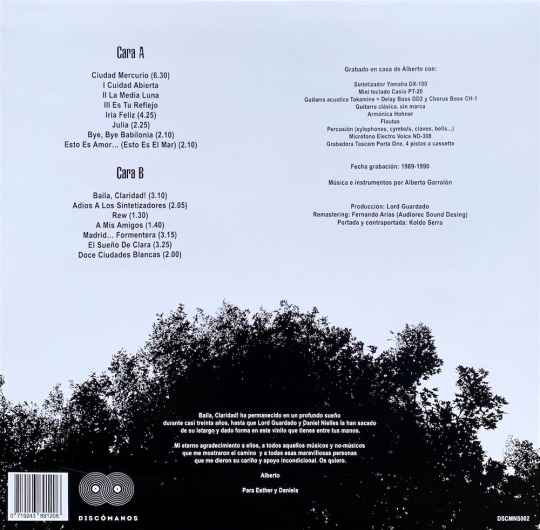
(images from my personal copy)
#alberto garralón#baila claridad!#nuevas músicas#spain#1989#1990#space music#ambient#psych folk#minimalism#new age#spanish folk#guitar#dreampop#cosmic#kosmische#fm synthesis#balearic#lord guardado#daniel nielles#discómanos#discómanos records#2019#reissue#album reviews#vinyl reviews#music reviews#vinyl#sun lounge#octagon eyes
1 note
·
View note
Photo

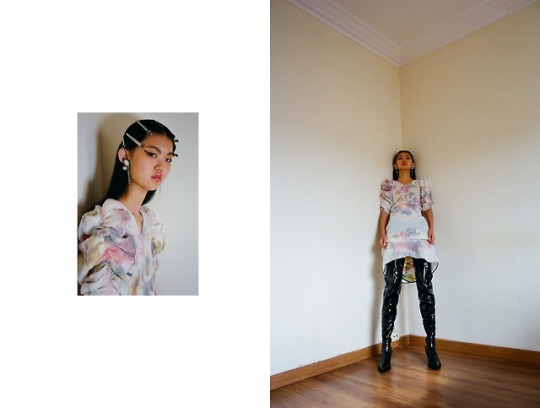
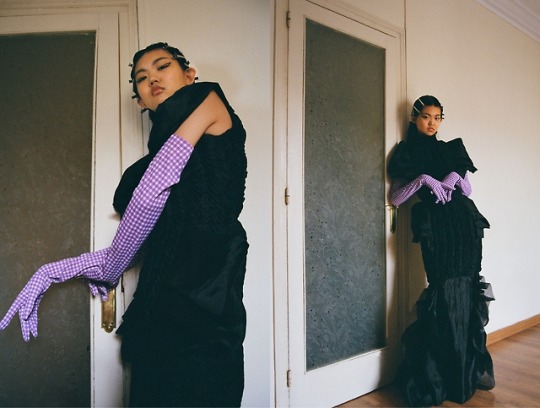

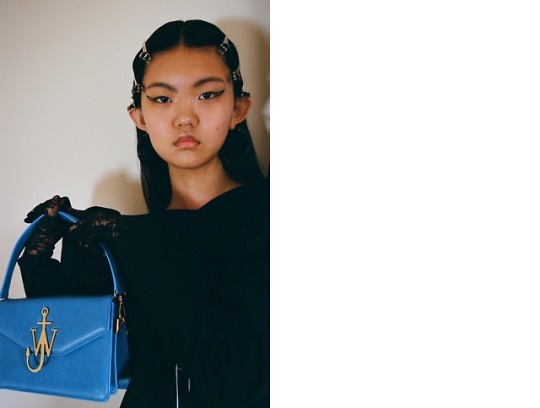
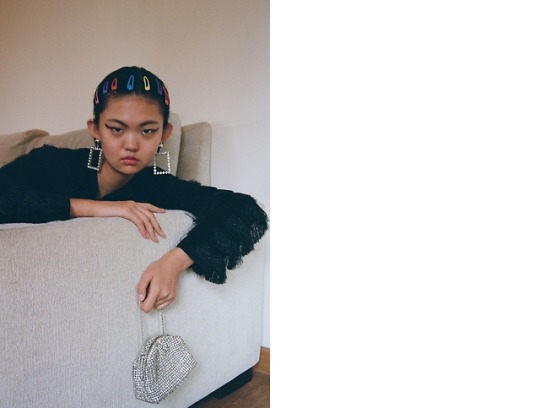




ANOTHER CINDERELLA STORY for sickymag.com
Photography & Fashion Anna Sandri
Model Xiaoyue Qin at Francina Models
Hair & Make-Up Regina Khanipova
Fashion Assistant Mateo Gargallo Aguilella
Clothes Céline, Jeffrey Campbell, Kiwi+Pomelo, Bibian Blue, Daniela Villa, Alexander McQueen, J.W.Anderson, Helmut Lang, MM6 Maison Margiela, Mila Milu, Marni, Isabel Marant, Chanel and Fernando Alberto
74 notes
·
View notes
Text
Massaro House, Lake Mahopac New York State
Massaro House, Lake Mahopac Villa, New York Real Estate, Mid-Century Luxury NY Home, Architecture Photography
Massaro House on Lake Mahopac, NY
Aug 5, 2021
Design: Lazor Office
Location: Lake Mahopac, New York State, USA
Massaro House, Lake Mahopac New York State
Source: TopTenRealEstateDeals.com
Right Or Wrong – Two Frank Lloyd Wright Designed Homes!
The most famous architect in American history, Frank Lloyd Wright designed over 1,000 structures, including Fallingwater, Johnson Wax Headquarters and the Guggenheim Museum. Roughly 50 miles north of New York City in the middle of Lake Mahopac on its own island, there is a stunning house cantilevered over the water that has had its share of controversy over whether or not it was designed by Frank Lloyd Wright.
Originally listed in 2012 at $20 million, it is back on the market priced at $9.95 million.
Known as the Massaro House, the original owner of the island, Ahmed Chahroudi, engaged Wright in 1950 to draw the plans of the main house and guest house. When they were completed, Chahroudi realized the cost to build was far over his $50,000 budget, so he had only the 1,200-square-foot guest house built.
The plans were passed on to the next owner, Joseph Massaro, who purchased the island in 1996 for $700,000. Massaro wanted to build the main house but didn’t care for some elements in the plans. The Frank Lloyd Wright foundation required $450,000 to rework the plans and supervise the construction in order to certify the house under the Wright name.
This was untenable to Massaro, so he hired Thomas A. Heinz, an architect-contractor and Wright historian to do the house instead. The Frank Lloyd Wright Foundation took Massaro to court obtaining a judgement that he was only allowed to describe the main house design as “Wright inspired,” though the guest house was an original Wright.
Built in 2007 on the 10.37-acre Petra Island, the 8,415-square-foot house has four bedrooms and two baths, between it and the guest houses there are six bedrooms and four baths. Also on the property is the original 1950 Wright-certified guest house, a second guest house, tea house, beach, dock and helipad.
Many Wright features are immediately recognized such as the large fireplace in the room jutting out over the water (there are six fireplaces in all), grouped skylights, built-in furniture, close to nature with the house built around and including boulders, and the use of wood throughout the home. Changes that Massaro made were adding air conditioning and radiant heat and the safety feature of chimney caps, which Wright detested.
Massaro also removed a stairwell that ran from the deck to the shore. Wright’s designs would not pass today’s building codes as initially drawn.
Used as a private getaway or for holding events, the island is only 50 miles from Manhattan and can be accessed by car, boat and helicopter. Lake Mahopac is a 587-acre lake to enjoy fishing, boating, jet skis and wave runners with skating and ice boating in the winter. A number of the island’s residents commute to Manhattan.
Margaret Harrington and Monica Webster of Douglas Elliman are the island’s listing agents.
Photo credit: Courtesy of Douglas Elliman
Source: www.elliman.com
Massaro House, Lake Mahopac New York State images / information received 050821
Houses
Location: Lake Mahopac, New York State, USA
New York State Architecture – NY State
Frank Lloyd Wright Buildings
Price Tower, Bartlesville, Oklahoma, USA
photo © Jessica Lamirand, CC BY-NC-SA 2.0
Price Tower Bartlesville
‘Tirranna’ home in New Canaan, CT, USA
source: Frank Lloyd Wright house in New Canaan + Rayward–Shepherd House by Frank Lloyd Wright in New Canaan
Frank Lloyd Wright’s most famous building – Fallingwater, Bear Run, Ohiopyle, Pennsylvania, USA
picture : Simon Garcia | arqfoto.com
Fallingwater House by Frank Lloyd Wright
Norman Lykes Home, Phoenix House, Arizona, USA
photograph : Wikimedia Commons
Frank Lloyd Wright House for Sale
Solomon R. Guggenheim Museum, New York, USA
photo : David M. Heald, © SRGF, New York
Guggenheim Museum New York
Houses of Sagaponac, Long Island, NY, USA – including Bachman Wilson House, NJ
Houses of Sagaponac
Zimmerman House, Manchester, USA
photo © Adrian Welch
Frank Lloyd Wright house : photos exclusive to e-architect
New York State Residences
Olnick Spanu House, Garrison
Design: Alberto Campo Baeza
Contemporary New York House
HSU House, Ithaca
EPIPHYTE Lab, Architects
Holley House, Garrison
hanrahanMeyers architects
New York City Architecture – Manhattan
Modern American house : Farnsworth House
Contemporary New York State Homes
House in Austerlitz
Design: anmahian winton architects
Secret Room Guesthouse, Ellenville, New York, USA
Design: Studio PADRON
photography: Jason Koxvold
Secret Room Guesthouse in New York
Guesthouse Ancram, New York, USA
Design: HHF Architects and Ai Weiwei
photo : Iwan Baan
Guesthouse Ancram – New York House
Comments / photos for the Massaro House, Lake Mahopac New York State page welcome
Website: Lake Mahopac, NY
The post Massaro House, Lake Mahopac New York State appeared first on e-architect.
0 notes
Photo

Friends forever 😍 Photo taken by Alberto @emobilitycazorla #wild #nature #mountains #camposdehernanperea #instagood #nature #silence #aloneintheworld #happyness #harbourage #photooftheday #field #outdoors #instadaily #explore #meadow #land #naturelovers #adventure #explore #highfield #wildlifephotography #friends #naturephotography #photography #instanature (en Sierras de Cazorla, Segura y Las Villas Natural Park)
#wild#mountains#camposdehernanperea#aloneintheworld#happyness#harbourage#field#meadow#adventure#highfield#friends#mandolinaes#my life
1 note
·
View note
Photo
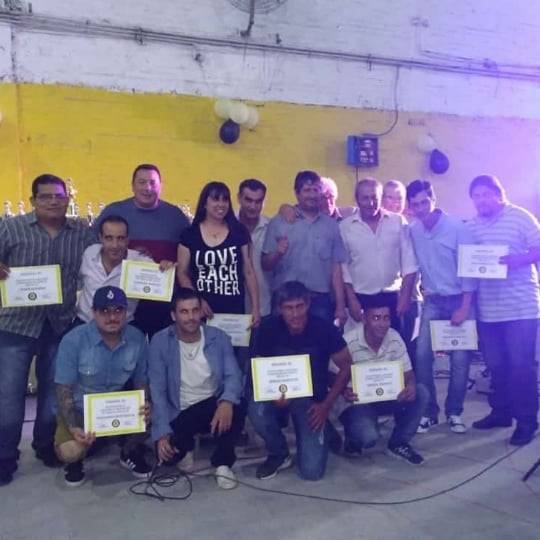
DIPLOMAS PARA TODOS Agradecimientos para quienes mantienen activo el Club: Claudio Distefano, Ángel Hernández, Toni Villa, Ariel Otonello, César Guerra, Ezequiel Boigues, Fernando Moschela, Sergio Barreto, Damian Bellagamba, Lorena Villanueva, Guillermo Paz, Daniel Franco, Mónica Ruíz, Mario Oña y Alberto Millán. #nacidosparasergrandes #vamosquevenimos #eldoradoplatense #friendsfc #futbol #soccer #foto #fotografia #pic #photography (en La Plata, Buenos Aires) https://www.instagram.com/p/B6HB_t1p-we/?igshid=1ll6gt8hfpj8d
#nacidosparasergrandes#vamosquevenimos#eldoradoplatense#friendsfc#futbol#soccer#foto#fotografia#pic#photography
0 notes
Photo
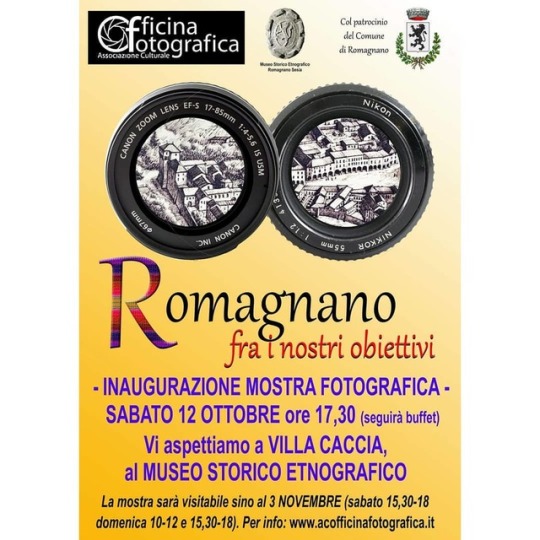
E dopo Guardabosone... vuoi non mettere in piedi, in poco tempo, un'altra mostra? Ecco allora gli Officini a scattare per le vie di Romagnano Sesia (NO) per realizzare una nuova esposizione dei lavori dei loro autori: "Romagnano fra i nostri obiettivi". 14 autori, 14 particolari punti di vista sulla cittadina sesiana. Vi stupiremo ancora... 😉 più che una promessa, è una minaccia! 😂😂😂 ============================== MOSTRA FOTOGRAFICA “ROMAGNANO FRA I NOSTRI OBIETTIVI” Nella suggestiva cornice del Museo Storico etnografico di Villa Caccia si inaugurerà, sabato 12 ottobre alle ore 17:30, la mostra fotografica “Romagnano fra i nostri obiettivi” proposta dall’Associazione Culturale Officina Fotografica con il patrocinio del Comune. Quattordici autori dell’Officina Fotografica hanno percorso, con interesse e curiosità, piazze e vie del paese ricercando scorci, dettagli e volti che a volte possono sfuggire anche agli sguardi più attenti. I visitatori potranno osservare lavori diversi per ricerca, composizione e tecnica di realizzazione ovvero un calibrato mix della variegata sensibilità degli autori, che si presenta come uno sguardo inedito, da non perdere sul paese e la sua gente. Proporranno i loro lavori: Annapaola Morini, Maddalena Ferro, Maria Luisa Briolotti, Miriam Ciavarra, Monica Mainardi, Sabrina Marianelli, Serena Dossena, Alberto Novello, Biagio Barretta, Fabio Tacca, Giovanni Franchi, Renzo Petterino, Salvatore Fabozzi, Samuele Dellera. Dopo l’inaugurazione ci sarà la premiazione del concorso fotografico “6 in Baraggia” e un buffet concluderà l’incontro. L’esposizione sarà visitabile sino al 3 novembre nei giorni di apertura del Museo (sabato 15:30/18:00, domenica 10:00/12:00 e 15:30/18:00). ========================= #acofficinafotografica #officini #autori #mostrafotografica #exhibition #romagnanosesia #inaugurazione #sfida #fotografia #photographers #forex #pannellifotografici #art #artist #photography (presso Museo Storico Etnografico - Villa Caccia - Romagnano Sesia) https://www.instagram.com/p/B3U8Ex-ImmN/?igshid=udst27qwthqa
#acofficinafotografica#officini#autori#mostrafotografica#exhibition#romagnanosesia#inaugurazione#sfida#fotografia#photographers#forex#pannellifotografici#art#artist#photography
0 notes
Photo

Thank you so much CHARBON ART SPACE for the incredible work you did with this exhibition.
Special thanks Lalie and Team.
"Trained as a painter, Emmanuel Monzon is mindful of the grey texture of his photographs. His empty landscapes reflect his attachment to forms and colours, giving them space to be heard. To me, the series exhibited at Charbon art Space echoes both the human loneliness and the power of things against a lost American backdrop.
This shadow looks like a calm rain of grey while one can hear the rustling leaves of the tree…"
Caroline Ha Thuc
Specialized in Asian contemporary art, she contributes to different magazines such as ArtPress in France and Pipeline/Am Post in Hong Kong.
thank you Caroline!

thank you for your support!
Maurice Benayoun (MoBen, 莫奔). (thank you for your support! and dedicace! :-) )
About:
"Artist, theorist and curator, is a pioneering figure in the field of New Media Art. Prof. Benayoun’s work freely explores the boundaries of media, encompassing video and virtual reality, interactive, mobile, urban media and large-scale public art installation. Prof. Benayoun’s work has been exhibited and awarded (Golden Nica Ars Electronica 1998…) in many major international museums including the Centre Pompidou in Paris, the museums of contemporary art in Lyon, Montreal, Seoul and Helsinki, Eyebeam and Museum of the Moving Image in New York, the Machida Museum, the ICC Tokyo, including the permanent exhibition inside the Arc de Triomphe, Paris, and Curator of the Open Sky Gallery on the ICC Tower media façade, HK."
MoBen’s work has won more than 20 international awards, including the Villa Medicis Hors les Murs, more than four Ars Electronica awards (including the coveted Golden Nica), Siggraph, Imagina, SACD and 4 International Monitor Awards. In 2014, MoBen was nominated for the Prix Ars Electronica Visionary Pioneer of Media Art award.
MoBen is currently a Professor at the School of Creative Media, City University of Hong Kong and Chair of Graduate Studies Committee.
Further reading: Maurice Benayoun, MoBen OPEN ART, Nlles Editions Scala, 2011 (monograph with 20 international contributors) The-Dump, 207 Hypotheses for Committing Art, ed. FYP, 2011 (English-French).
Thank you Shiobane for your performance!
"The beautiful Shiobane graces the Charbon Arts Space in Aberdeen with her beautiful moves. "video: @hkeldcom
We checked out Emmanuel Monzon’s exhibition tonight! #iamdining #katemarch #emmanuelmonzon #photography #hkarts #hkartscene #hkartstudio #hkartspace #saturdaynight
Anne DENIS-BLANCHARDON - Conseillère de coopération et d'action culturelle-Consul (Culture, Education & Science)
alexandre colliex: Fondation Alberto et Annette Giacometti, Centre Pompidou, Conseil Régional des Pays de la Loire.
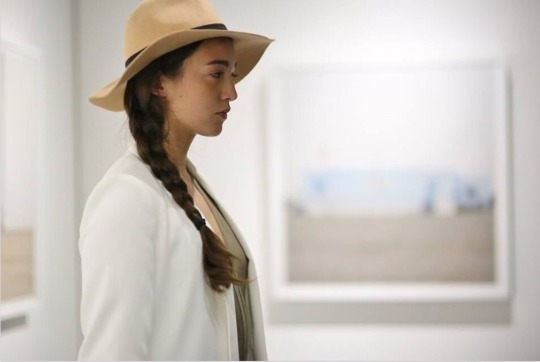
Thank you Shiobane for your performance!
BE ART MAGAZINE:
Monzon explains ‘This aesthetic of the void in my photographic work attempts to understand our current environment : can it be one of de-civilization?
Monzon shows milky silent suburbs where the asphalt blends with the rocks or the rocks blends with the asphalt. With the magic of Monzon’s eye to take the right angle, and his talent to choose the right time in the day to shoot, those urban sprawlings have become part of Mother Nature.
Is it possible to consider that an artist would unveil how would be our future? because those powerful pictures give the feeling that Monzon shows our World like it will be in a Century, or Two.
For sure a do not miss exhibition
Beatrice Chassepot


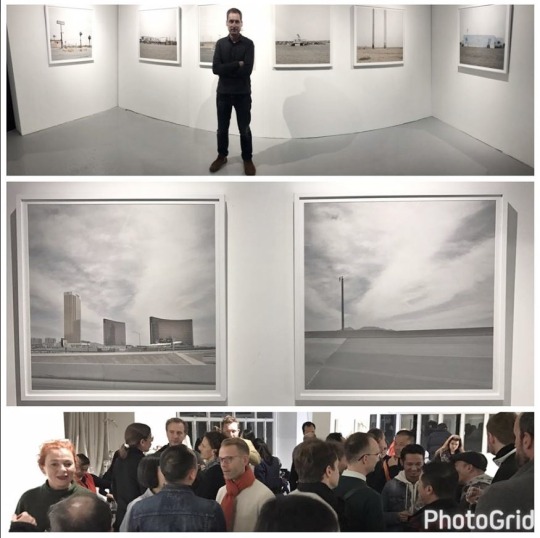
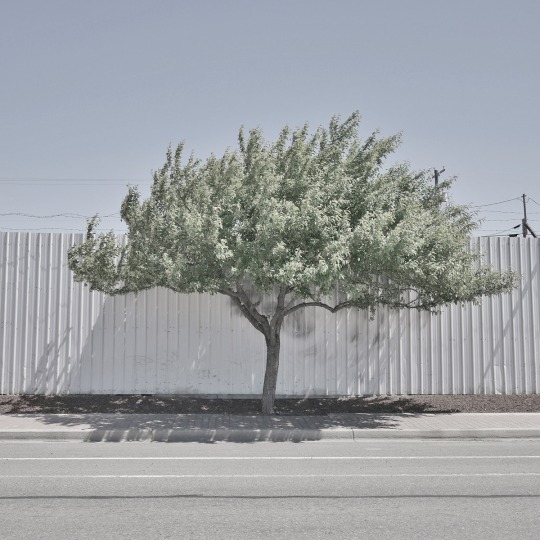
0 notes
Link
Artist: Amie Siegel
With: Sara Regal
Venue: NoguerasBlanchard, Barcelona
Exhibition Title: The Swamp of Forever. Chapter 2: Coincidence
Date: December 19, 2019 – February 28, 2020
Curated By: Carlos Fernández-Pello
Click here to view slideshow
Full gallery of images, press release and link available after the jump.
Images:
Images courtesy of NoguerasBlanchard, Madrid
Press Release:
The image of the Noonday Demon appears in European tradition thanks to a translation error, a mere coincidence. In the Psalm 91 of the Torah it is said: «you will not fear night fright, nor the arrow that flies from the day, nor the plague that is in darkness, nor the scourge that strikes at noon» It would be the formal resemblance between the Hebrew word “scourge” (yashûd), and the word “demon” (yeshed), which made the Vulgate translate that daytime laziness as the meridian demon.
Since then, and given the solar nature of the southern European territories, it is not surprising that the northern cultures have disqualified the Mediterranean culture for it apparent neglect and laziness, perpetuating the stigmas of that southern demon. This entity appeared precisely at the most luminous hours, around lunchtime, when the sunlight does not project shadows and bodies seem to have ceased their existence; when the spectres of digestion, sleep or fatigue confuse the imagination with perception.
Amie Siegel (1974, Chicago) has been suspending for nearly two decades that fine line that separates the conscious from the unconscious, exploring the potential of an image that expands through space and folds it, making it coincide with memory. For Siegel, the time of the image is a little bit like that daimonic noon, inhabited by secret and silent relationships that only come to light when we stop our daily routine and look, drawing another continuity between those things that the conscious world insists on separating.
Siegel’s works have been frequently described as representations of a complex economy that ties authorship with genre, value or the architectonic space. This is indeed the case with Provenance (2013), one of her most well-known moving image works, in which she describes a path that travels from the salons of different luxury apartments, decorated with chairs designed by Le Corbusier, to state buildings constructed by him in Chandigarh, where the same chairs are piled up and discarded. However, beyond the paradoxes of a speculative value system such as the luxury and art markets, Siegel’s inexorable suspensions also reveal a way of understanding time by sedimentation: as if it were Jungian archetypes of a collective unconscious, Siegel is able to reveal that the temporality of a chair at auction for $34,000 is simultaneous, it is just as real, as the time of that same chair as a disposable office supply. In her films, nothing would seem to precede or happen, or turn in circles. All the differences coexist at the same time.
For this second chapter Amie Siegel gathers a collection of works that continue that experimentation with time, revolving around Jean-Luc Godard’s Le Mépris (1963), itself based on an homonym novel written by Alberto Moravia, Il disprezzo (1954), whose argument is, in turn, Siegel posits, largely influenced by Gradiva by Wilhem Jensen, famous for having inspired Freud in its development of the repressed.
This cascade of information is not unintended but actually a tiny sample of the system of overflowing relationships that Siegel puts into operation in the central work of the exhibition, Genealogies (2016), which explores the almost infinite chain of characters, data and images that a movie or place is able to summon when one digs into its insignificant details. Because of this, like a hallucination in broad light, Genealogies is capable to convince us that there is a delusional familiarity between Sir John Soane, the Persol sunglasses brand, the Esposizione Universale Roma, Brigitte Bardot, Pink Floyd Live at Pompeii, Alain Robbe-Grillet, softcore porn, Hugo Boss or de Chirico’s paintings, among many other references, by making all these stories coincide on the same rocky cliff on which Villa Malaparte stands, on the edge of the Mediterranean, where the motion picture was filmed.
This will also be one of the few times that Genealogies (2016) is presented in a gallery without its twin work The Noon Complex (2016), inspired by a text of the same name by Roger Caillois that argues the effects of the solar zenith on our imagination. Following that spectral logic of what does not cast a shadow, in this multichannel installation Siegel thoroughly erases Brigitte Bardot’s body from all the scenes in which it appears naked in Le Mépris. The objective of this operation would seem simple but its effect is twofold: while Siegel plays poetically with the visibility and invisibility of the film’s gender bias, in which Bardot was asked to “show more ass” to make the film a more profitable investment, the result of her absence transforms Godard’s original shots into architectural camera gestures that could now be Siegel’s own, relocating the presence of the female from being the observed to being the observer.
As if we were possessed by the noon demon itself, we attend to the exhibition of a work without shadows that is nevertheless present in the form of a partial shadow: The Noon Complex is exhibited in this second chapter of the cycle only through one of its three channels, in the form of a silent monitor, The Noon Complex (Phantom Limb) (2016). In it, we see a double of Bardot repeating the same movements that have been previously erased, reincarnating her, only in a neutral museum setting, and now it is the architectural set of the Villa Malaparte that becomes effaced.
The guest piece Mass Seat (2019), by designer Sara Regal (1989, Viveiro) also participates of this idea of a set for the body, of a bodily mould, that walks the thin line between functional furniture and abstract sculpture. Yet in this case Regal’s goes a step further when she also questions the temporality of the seat, of the pause to contemplate, when designing this modular bench in the form of a thick fluid.
The selection of works is completed with Siegel’s Body Scripts (2015) in which the artist has blocked different parts of Moravia’s original novel with the turquoise blue color of the sea, leaving visible only those passages that allude to the female protagonist, and with Surrogates (2016), a continuous slide projection highlighting the objectification of the female body as a sculpture through images of damage and repair of different classical pieces of The National Archeological Museum of Naples.
All in all, surrealist ethnography realized almost a hundred years ago that this “midday complex” of southern European cultures was in progressive decline, favoring midnight as a new “witching hour.” For Caillois, the loss of that instinct that confuses the body with space and feeds the fantasy during the vigil, was largely due to the appearance of the clock and the modern division of daytime into working hours and rest hours. In this way the demons of the imagination have been relegated to live forever separated from the light, in the nocturnal after productive time. Siegel’s work seems to confirm that, if we stop here, on the edge of the swamp, we can be sure that time will continue to coincide in broad daylight.
The work of Amie Siegel (1974, Chicago) ranges from film to photography, performance and installation. Recent solo exhibitions include the South London Gallery; the Metropolitan Museum of Art, New York, Museum Villa Stuck, Munich; Audain Gallery, Simon Frasier University, Vancouver, B.C.; Kunstmuseum Stuttgart and the MAK, Vienna. The artist has participated in group exhibitions at Witte de With, Rotterdam; the Whitney Museum of American Art, NY; Hayward Gallery, London; KW Institute for Contemporary Art, Berlin; CCA Wattis, San Francisco; MoMA PS1; MAXXI Museum, Rome; Swiss Institute, New York; Haus der Kulturen der Welt, Berlin and the Walker Art Center, Minneapolis. Siegel’s work is in public collections including the Whitney Museum of American Art, The Metropolitan Museum of Art, Tate Modern and the Solomon R. Guggenheim Museum. Her films have been screened at the Cannes, Berlin, Toronto and New York Film Festivals, The Museum of Modern Art, New York and The National Gallery of Art, Washington, D.C. She has been a fellow of the DAAD Berliner-Künstlerprogramm and the Guggenheim Foundation, the Fulton Fellow at The Film Study Center at Harvard University, a recipient of the ICA Boston’s Foster Prize, Sundance Institute and Creative Capital Awards. She lives and works in New York City.
Sara Regal (1989) born on the coast of Galicia, Spain, was deeply enriched from her native environment. Upon finishing her studies in the Universidad de A Coruña she moved to London, where she gained experience working across diverse disciplines, from industrial and furniture product design to architectural interior design projects. Subsequently she mastered on Product Design at ECAL, in Switzerland, enabling her to explore and develop her own methodologies. She elaborated an intuitive and experimental approach centered on material qualities and production, with a strong influence on color trends and art direction. After her artistic residency at the HKDI, Hong Kong, she started to work for the Spanish brand Camper as an interior and set designer. Recently her work was showcased at the New York Design Week.
With many thanks to Thomas Dane Gallery London/Naples.
Link: Amie Siegel at NoguerasBlanchard
Contemporary Art Daily is produced by Contemporary Art Group, a not-for-profit organization. We rely on our audience to help fund the publication of exhibitions that show up in this RSS feed. Please consider supporting us by making a donation today.
from Contemporary Art Daily http://bit.ly/2HAf045
0 notes
Text
Decadent Winter Wedding Styling in Tuscany
Any wedding in the romantic setting of Tuscany is going to be beautiful, but these decadent winter wedding styling ideas at a nineteenth century villa in Lucca are pure and unadulterated sophistication. Stylist ilbiancoeilrosa used a sophisticated colour palette of rich burgundy and petrol blue for the lavish and decadent styling, the perfect choice for the surroundings.
With the magnificent venue as the main visual attraction, the styling is minimal but oh so elegant. Flowers form much of the styling with the use of white anemone with striking black centres, rich burgundy roses and ranunculus, dark green foliage and even the unusual inclusion of oak leaves. This concept really brings the outside into this magnificent Tuscan venue.
The florals give a real wow factor to the tablescape. Keeping it simple, vases of oak tree branches fall over the table adorned with candles, vintage china and glassware, and scattered with rose petals. This winter wedding styling is very romantic.
Whilst there are so many details I love about this shoot, I adore the bride’s style in particular. In keeping with the surroundings and romantic vibe, she wears a gorgeous ball gown wedding dress by the fabulous Gabriella Sposa, with lace bodice, full tulle skirt and intricate beading. Her hair and make-up, kept naturally simple, features statement dark lips to complement the burgundy colour palette.
From the decadent tablescape to the bridal style, you’ll find oodles of ideas for a wedding which is timeless and sophisticated. Photographers Beatrice and Alberto of Intimate Love Stories captured this gorgeous winter wedding styling so perfectly…
The Old World
“We wanted this winter wedding shoot to enhance the beauty of the Tuscan countryside and luxurious villas of the territory. A wonderful nineteenth century villa in Lucca, a beautifully restored village, was the perfect location. The styling details treated an environment that reflects the old world with a decadent touch.
“We chose a dark red and blue colour palette for the shoot, and decorate the table with beautiful ceramics and an impressive floral centrepiece.
“And for our couple… a refined lace dress with wide tulle skirt for her and a stylish dark suit for him. Artisan jewellery completed our bride’s look. The Villa Lenka garden and fish pond were the perfect background for photos of the bride and groom.”
Creative Team
Photography: Intimate Love Memories
Coordination and Styling: ilbiancoeilrosa
Shoot Location: Coselli Estate, Tuscany, Italy
Cake: Le Bontà
Flowers: Fiori Belluomini
Table Decor: Le Mas Histoire d’interieurs
Stationery: Aembish
Wedding Dress and Bride’s Shoes: Gabriella Sposa
Jewellery: Maraviglie
Groom’s Shoes: Dr Martens
Hair and Make-Up: Maura Martinelli
The post Decadent Winter Wedding Styling in Tuscany appeared first on The Wedding Community Blog.
0 notes
Photo

Villa Coral House in #zapopan #mexico deigned by Villar Watty Arquitectos @villarwattyarquitectos. Architects: Alberto Villar, Gerardo Villar & Gabriela Zarazúa Completion year: 2016 Location: Zapopan, Mexico Photography: Cesar Bejar @cesarbejarstudio. #casa #архитектура www.amazingarchitecture.com ✔ A collection of the best contemporary architecture to inspire you. #design #architecture #amazingarchitecture #architect #arquitectura #luxury #realestate #life #cute #architettura #interiordesign #photooftheday #love #travel #construction #furniture #instagood #fashion #beautiful #archilovers #home #house #amazing #picoftheday #architecturephotography #معماری (Zapopan) https://www.instagram.com/p/CE1sVD_lB5g/?igshid=uptt1cf7xjqm
#zapopan#mexico#casa#архитектура#design#architecture#amazingarchitecture#architect#arquitectura#luxury#realestate#life#cute#architettura#interiordesign#photooftheday#love#travel#construction#furniture#instagood#fashion#beautiful#archilovers#home#house#amazing#picoftheday#architecturephotography#معماری
15 notes
·
View notes
Photo
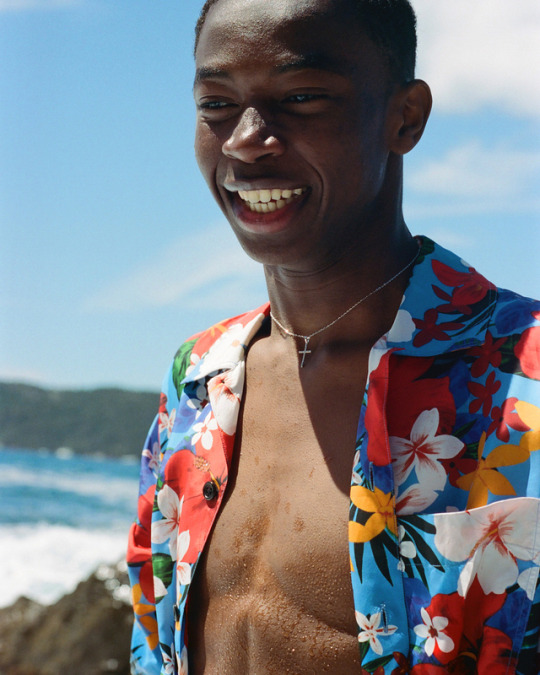
Bons Baisers d’Hyères. Festival de Hyères + Boycott Magazine + Ami Paris. Full video & images on www.boycott-magazine.com Abel wears @amiparis Photography Daragh Soden Creative director Nataniel N.M.Robert Stylist Simon Pylyser Production Vaadigm.studio Photographer’s assistant Clement Eiras Abel at Elite Paris Printed by Kopa Print Special thanks to Jean-Pierre Blanc, Marc Turlan, Benjamin Saulnier, Thibault Dubaele, Julie Cuisinier, Magalie Guérin and all team of Villa Noailles ; Sylvie Grumbach, Marie-Laure Girardon, Hugo Howlett, and all team of 2e Bureau ; Monique Foy, Alexandre Grognuz, Michèle Montaigne, shipping company TLV, Happy Home, Daragh Soden, Luis Alberto Rodriguez, Kopa Print, the city of Toulon, and a special thanks to Ami Paris & Alexandre Mattiussi. #BonsBaisersdHyeres #BoycottMagazine #FestivalDeHyeres #Hyeres33 #AmiParis #AlexandreMattiussi (à Île du Levant)
0 notes
Photo

Boyhood ( @BoyhoodGarmentsOfficial ) presents ‘My ideal brothers’. Directed by Hector Herce ( @samuelcerrudo ). Creative Direction: Samuel Cerrudo ( @samuelcerrudo ) Direction and Edit: Hector Herce ( @hector.herce ) Photography: Alejandro Buera ( @a.buera ) Designer: Samuel Cerrudo Actors: Nicolas Alfonso ( @nicolasalfg ), Adrian Villa, Hans Benedikt, Alberto Marco Styling: Samuel Cerrudo Production: Marcos Cerrudo Andujar Marcos Cerrudo Castelo Make-up: Carolina Rodriguez Guerra ( @carolina_rosso ) Music: Satie, Gnossiennes-No.4
0 notes